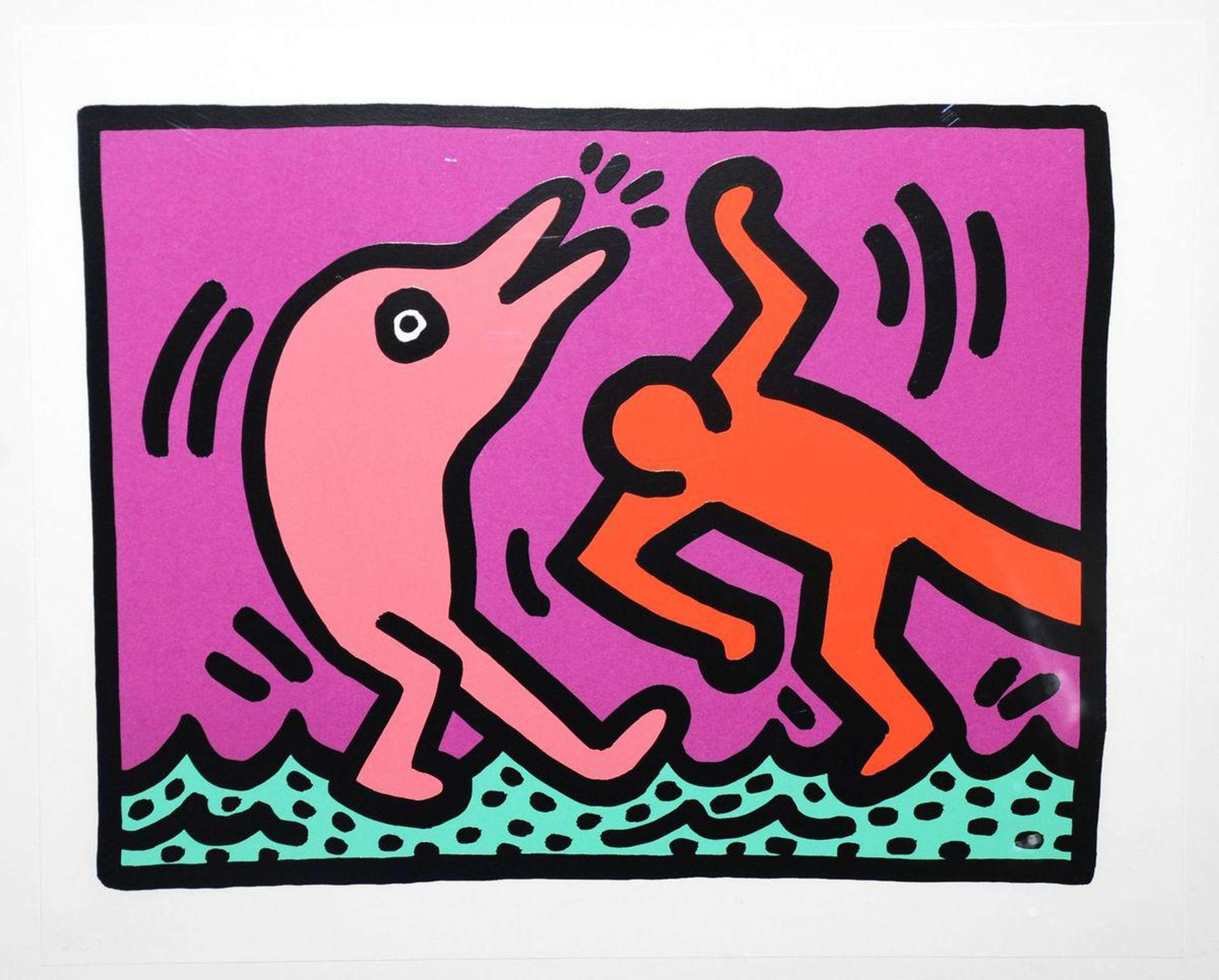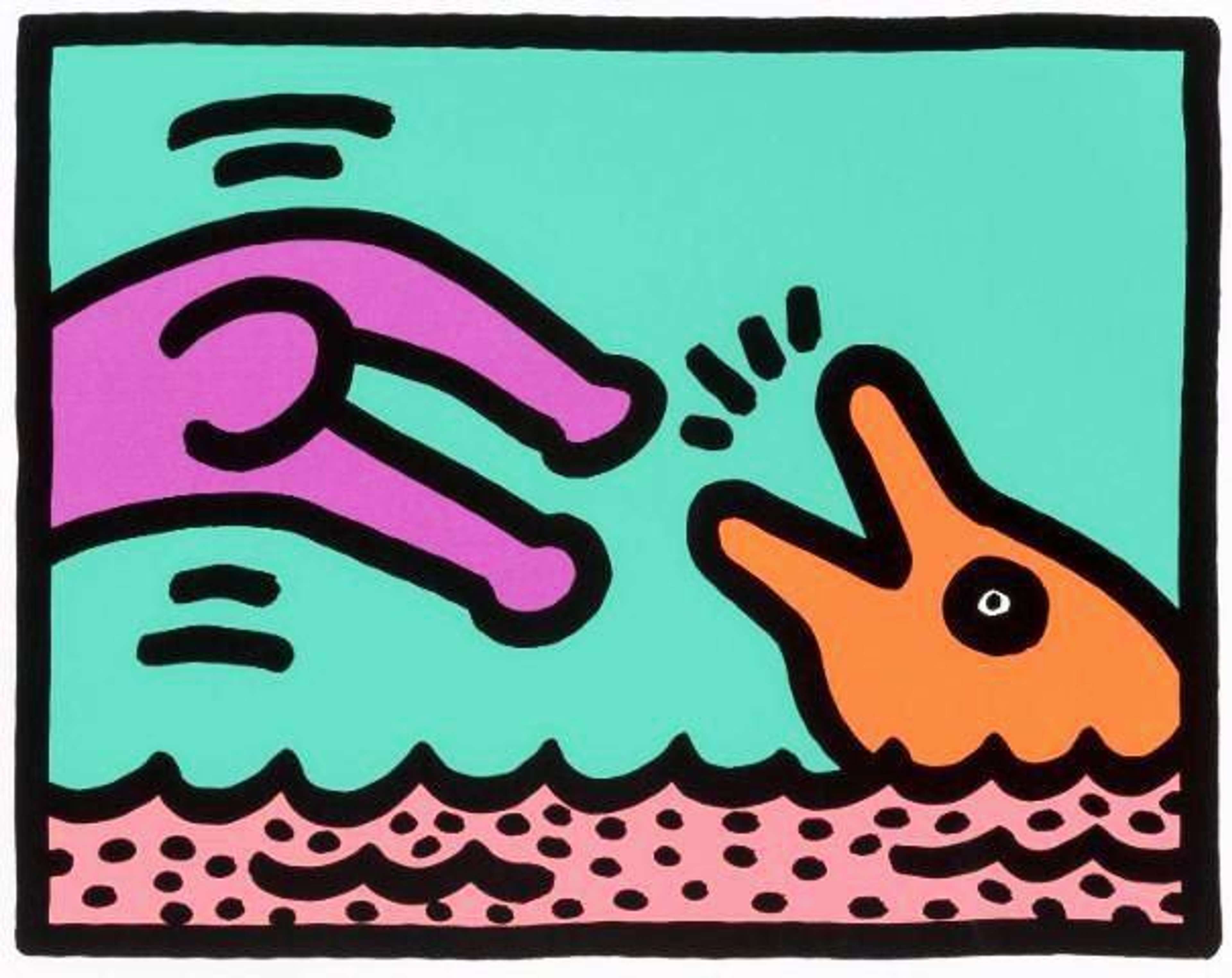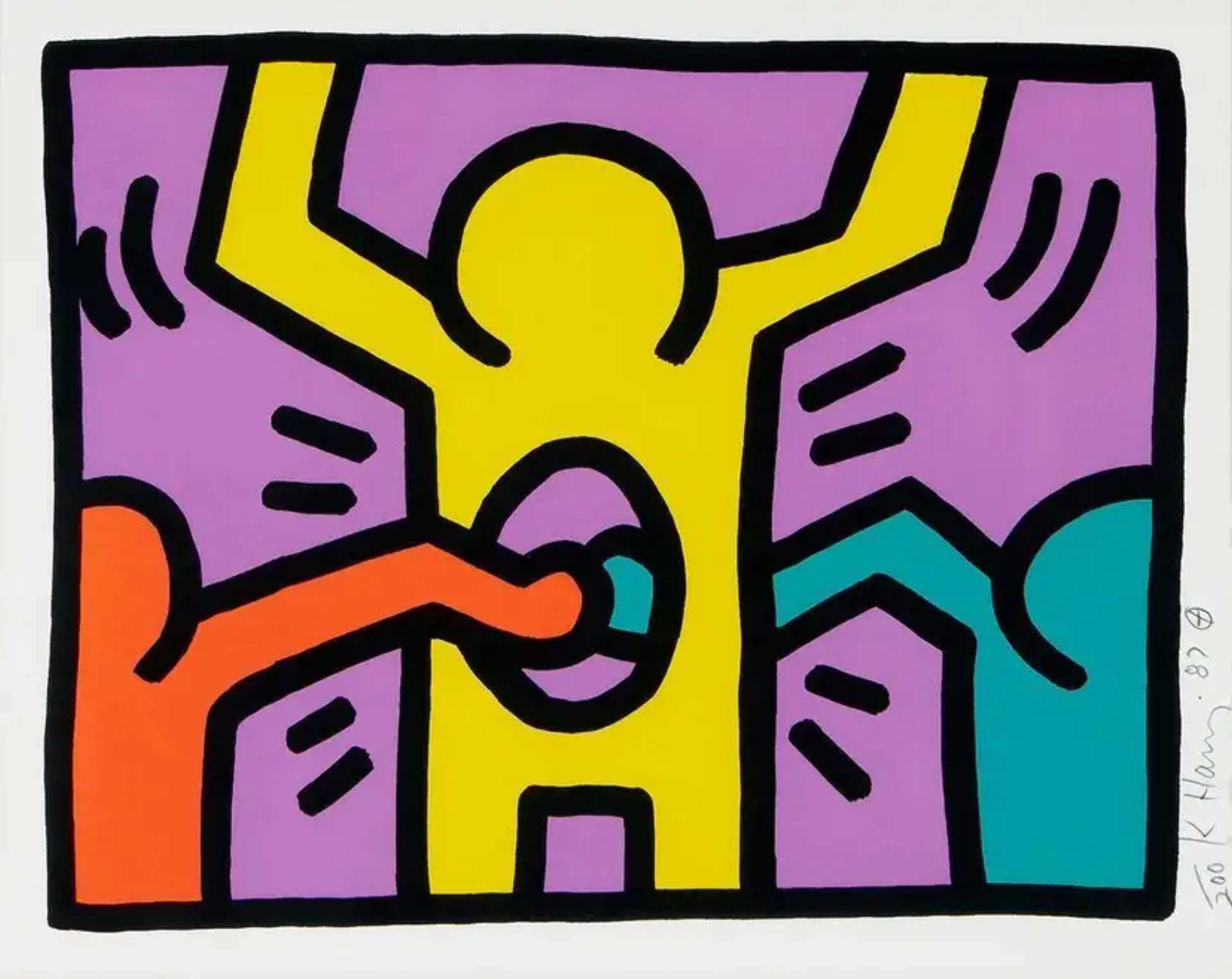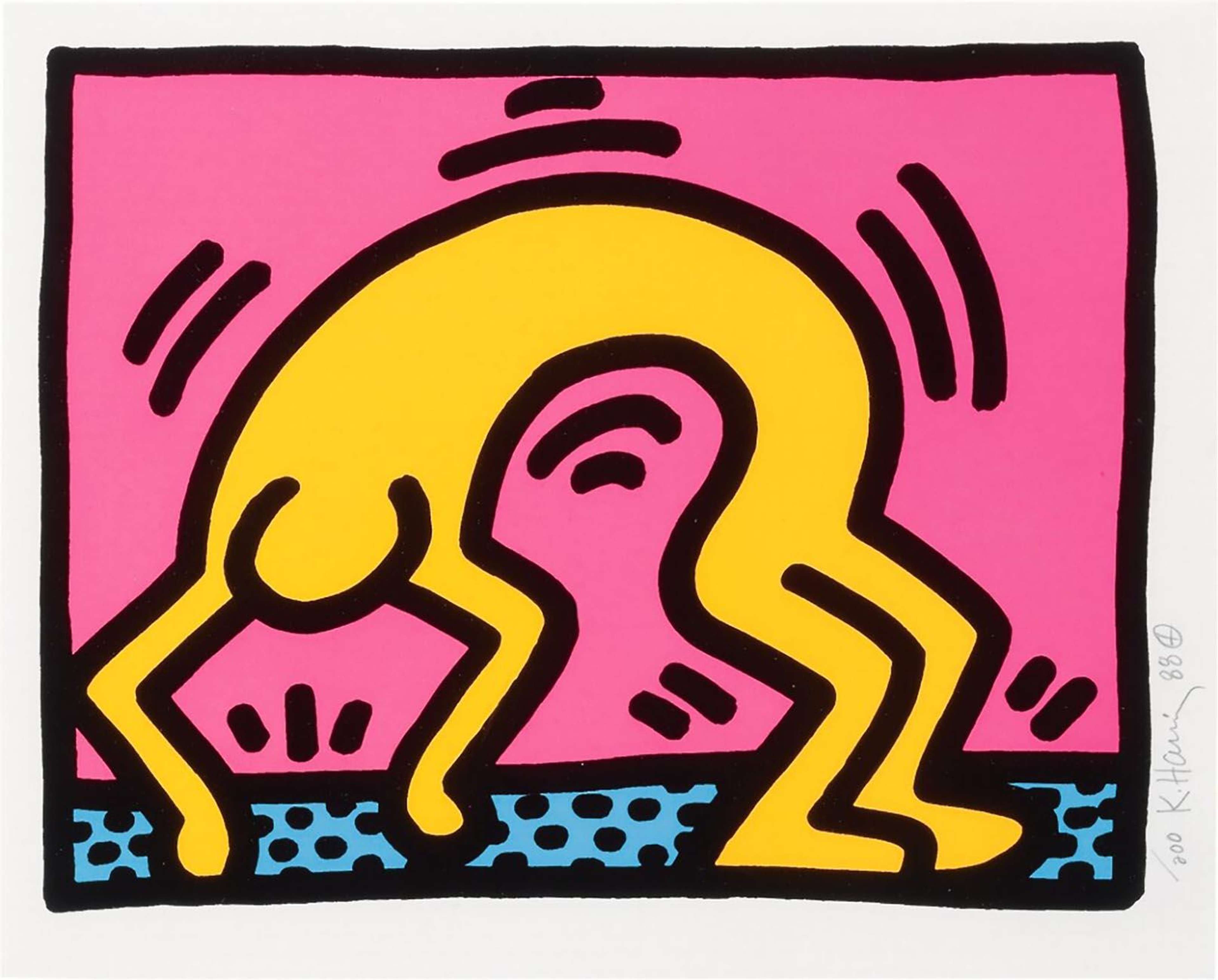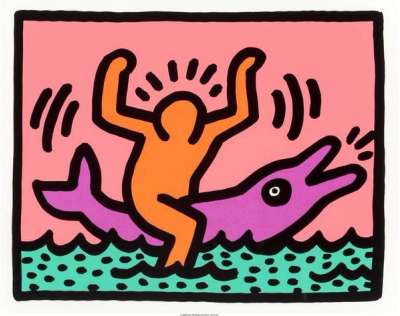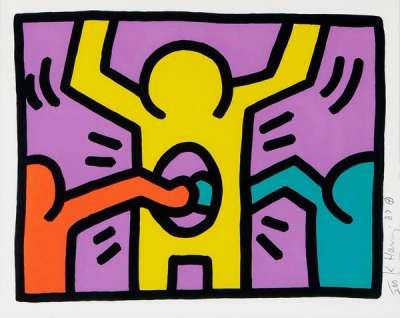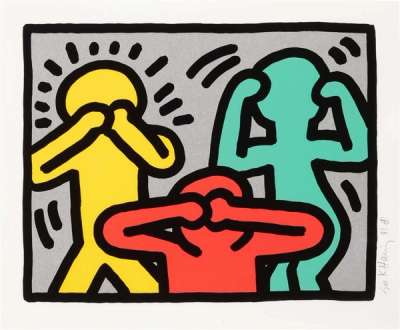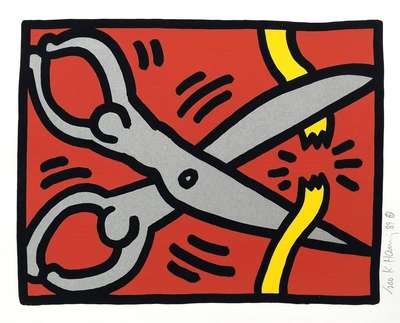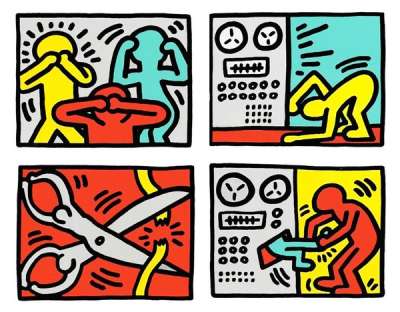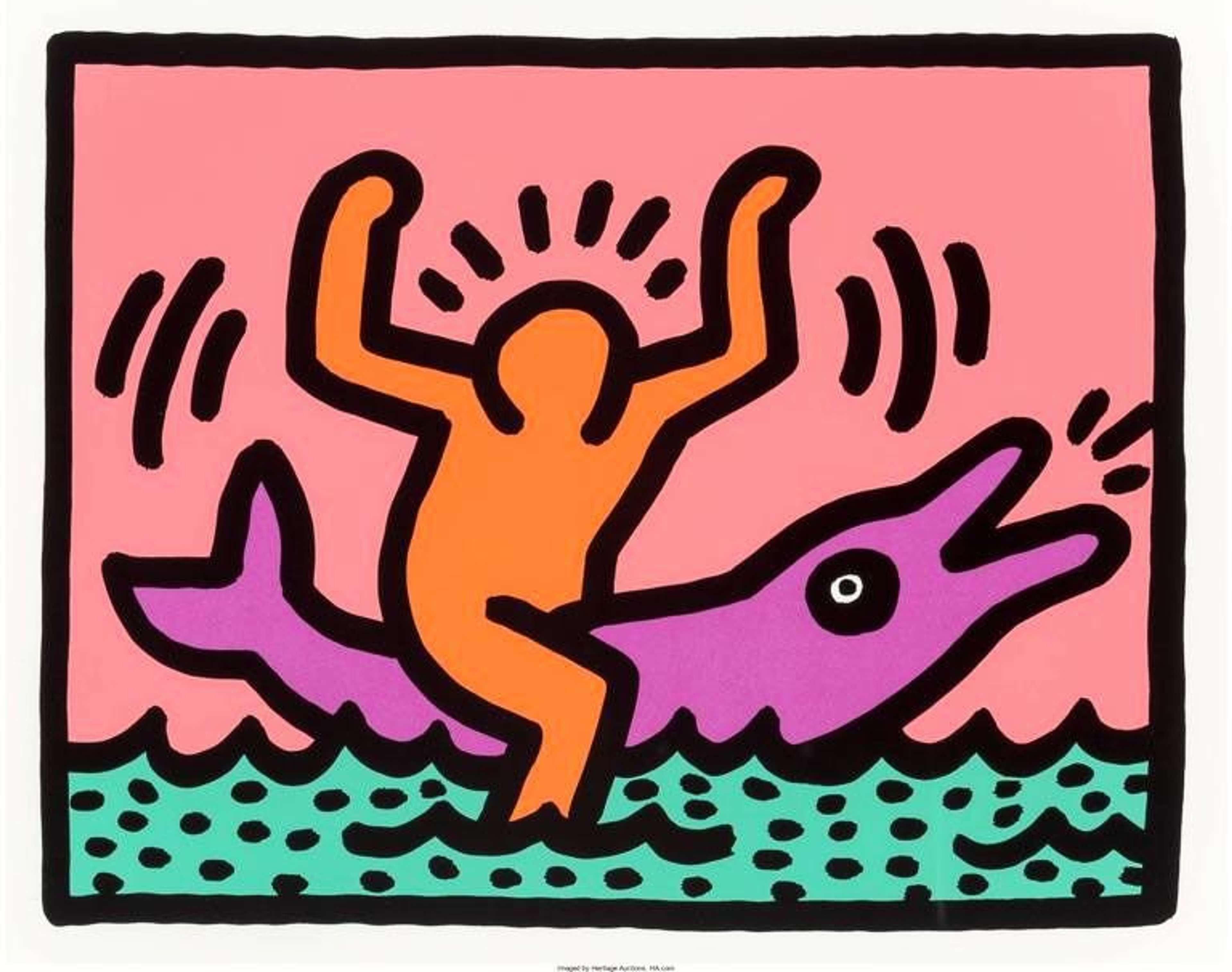 Pop Shop V, Plate II © Keith Haring 1989
Pop Shop V, Plate II © Keith Haring 1989
Keith Haring
250 works
In the heart of the 1980s New York art scene, a space emerged that would challenge conventional notions of art's place in society: Keith Haring's Pop Shop. Haring, a giant of the contemporary art world, was renowned for his vibrant and dynamic visual language—his art was characterised by bold lines, bright colours, and animated figures, often conveying profound social messages. The Pop Shop was not just a store but an extension of Haring’s artistry, allowing his work to be accessible to all, irrespective of socio-economic status. This venture boldly erased distinctions between high art and merchandise, signalling a revolutionary shift in how art could be consumed and appreciated.
The Genesis of the Pop Shop
In the mid-1980s, iconic artist Keith Haring established the Pop Shop in downtown Manhattan, a venture reflecting his vision of making art universally available. Situated in SoHo at 292 Lafayette Street, the shop, inspired by Warhol’s Factory, wasn't just a store but an embodiment of Haring’s artistic philosophy. While it sold merchandise like t-shirts and badges adorned with Haring’s emblematic designs, often for as little as 50 cents, its true essence was in democratising art, blurring the lines between high and low art. The overwhelming success of this model led to another store opening in Tokyo in 1988. Profits from these ventures supported causes dear to Haring, including children’s charities and AIDS research. Haring's unique style, characterised by thick black outlines and distinct iconography like his barking dog and radiant child, originated from his street art in New York’s subways in the early 1980s. His Pop Shop series also underscores his fascination with using art as a language, influenced by his semiotic studies at the School of Visual Arts in New York.
Haring’s Influence on Pop Culture
Haring's instantly recognisable aesthetic has embedded itself firmly within global pop culture. Decades after his heyday, Haring’s iconic symbols continue to pulsate with energy, finding their way onto streetwear, luxury fashion collections, and even influencing modern tattoo designs. Major brands, from Adidas to Uniqlo, have released collaborations that feature his iconic, animated characters, attesting to their appeal.
Beyond fashion, Haring's influence permeates the music industry. His visuals have graced album covers, while music videos across various genres have been visually enriched by animating his drawings, paying homage to his distinct style. Notably, his connection with legends like Madonna and Grace Jones showcases the intersection of his world with the music heavyweights of his era. Today's pop culture, rife with nostalgia, frequently revisits the 1980s, ensuring that Haring's art remains ever-present. His impact is evident in contemporary street art, graphic design, and even in the ethos of activism merged with creativity.
Inside the Pop Shop: What Was Sold?
The Pop Shop stocked an array of items that catered to a broad audience, ensuring that everyone could take a piece of Haring's world home, regardless of their budget. On one end, there were original art pieces and limited edition prints, providing savvy collectors and art enthusiasts a chance to own a unique piece of Haring's legacy.
However, Haring's vision for the Pop Shop extended beyond traditional art forms. The store also featured an expansive range of merchandise, including T-shirts, posters, buttons, and collectibles from the artist and a few of his contemporaries—all infused with Haring's signature illustrations. Clothing, especially, became a canvas for his art, allowing wearers to literally don his designs and carry them into the world. Offering such a diverse range of items made Haring's work accessible to both the seasoned art connoisseur and the everyday passerby.
The Legacy of the Pop Shop
The Pop Shop marked a seminal shift in how art could be perceived, purchased, and proliferated. Its legacy is multifaceted, influencing both the art and retail sectors profoundly. In the art sphere, the Pop Shop was a defiant stand against the entrenched elitism that often permeated the industry. Haring's venture underlined that art wasn't solely the domain of galleries, auction houses, or the affluent. By selling his artwork in more commercialised formats and at varying price points, Haring championed the idea that art should be enjoyed by any individual who wishes to engage with and enjoy it, a message that resonated with many subsequent artists who sought to make their creations accessible to a wider audience.
From a retail perspective, the Pop Shop was a pioneer in experiential shopping. Before the terms became industry buzzwords, Haring's store offered a unique brand experience, where shopping was interwoven with art, activism, and community engagement. This holistic approach has since influenced retailers globally, highlighting the value of offering consumers more than just products, but experiences.
 Untitled © Keith Haring 1982
Untitled © Keith Haring 1982The spotlight fell on Haring’s Untitled, which soared past its anticipated estimate of over £5.0M at a Sotheby’s auction in 2017. Not only did this sale further solidify Haring’s standing as a blue-chip artist, but it also set a new auction benchmark for his works. The magnitude of this sale speaks to the growing appreciation and demand for the Haring market.
Although Untitled, 1982 was not sold at the Pop Shop, many of the symbols found in this work are featured throughout the Pop Shop series. Of the collection, renowned pieces such as Pop Shop I, Plate IV, Pop Shop IV, Plate II, Pop Shop IV, Plate I and Pop Shop Quad II have all surpassed their original purchase prices at auctions, more than proving their worth for both buyers and sellers.
Does Keith Haring's Pop Shop still exist?
Haring's untimely death in 1990 meant that the driving force and visionary behind the venture was no longer present to steer its direction. Although the shop continued to operate for 15 more years under the management of his foundation, the dynamic and evolving essence that Haring personally brought to it was undeniably missing.
Economic challenges also played a role. Rising rents in Manhattan, especially in the bustling SoHo neighbourhood, made it increasingly difficult for unique retail spaces to sustain themselves. The Pop Shop, despite its historical and cultural significance, wasn't immune to these financial pressures. As its messages became more mainstream and accepted, some argue that the shop had fulfilled its purpose and mission, making its closure a symbolic end to a chapter rather than a decline.
The Influence of Keith Haring's Pop Shop
Blurring the boundaries between high art and commercial merchandise, Haring defied traditional art norms and widened access to his vibrant and compelling works. Beyond its physical walls in New York and Tokyo, the Pop Shop symbolised a transformative idea—that art should be for everyone.
While the physical space in New York closed its doors in 2005, and Tokyo in 1988, the spirit of the Pop Shop is far from extinguished. Prints and collectibles are available across a variety of reputable art brokers and online platforms. Numerous exhibitions and retrospectives around the world have highlighted the significance of the Pop Shop, keeping its memory alive. Artists today, inspired by Haring's vision, continue to challenge traditional art-commerce boundaries, making art more accessible to the masses. Though the tangible brick-and-mortar space may no longer stand, the Pop Shop's ethos, its commitment to democratising art, and its celebration of creativity and activism echo in the hearts of art enthusiasts globally.


